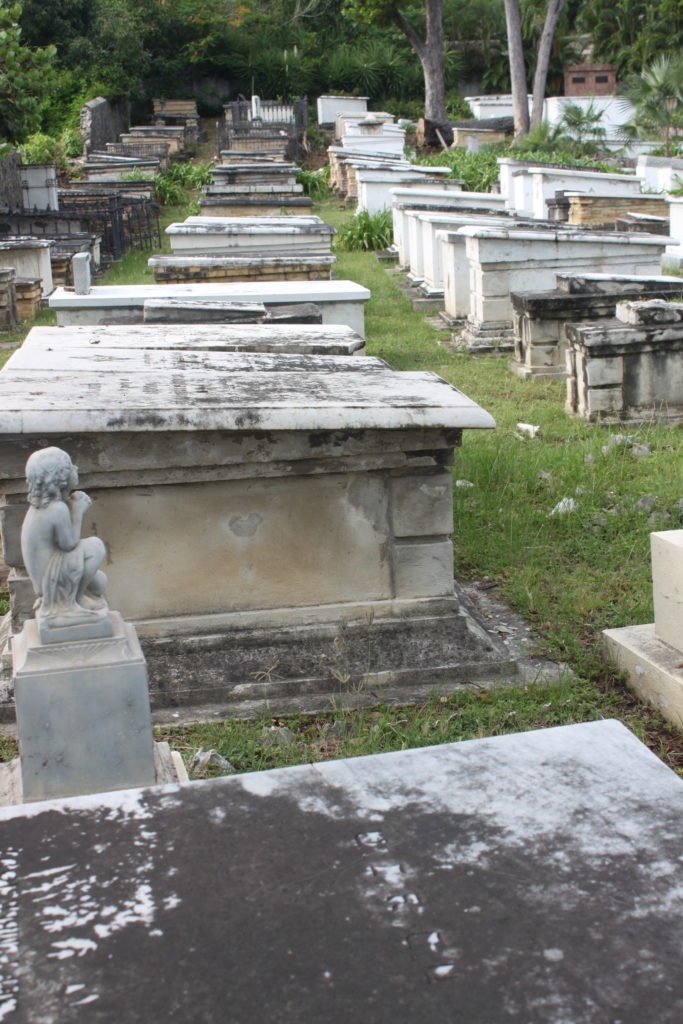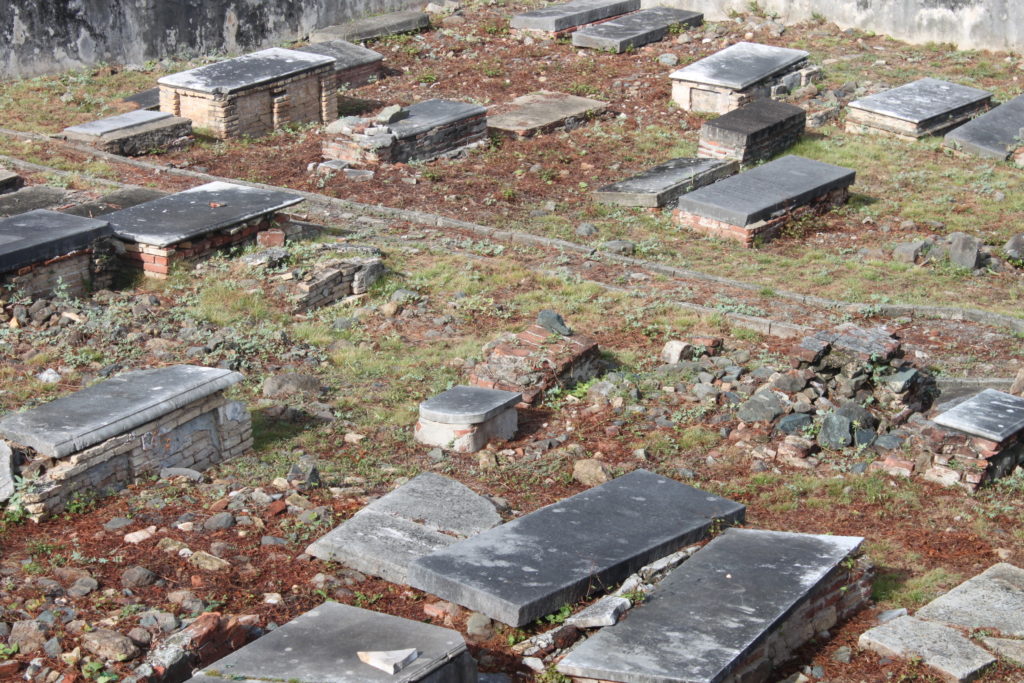This is the first article in a three-part series highlighting historic cemeteries on the island of St. Thomas, U.S. Virgin Islands. Jewish, Danish and Moravian cemeteries will be showcased. Excluding small family graveyards there are seven cemeteries on St. Thomas, of which two are public and five affiliated with religious groups.

Beyond the gateways of the two Jewish cemeteries located on St. Thomas, an undeniably rich history can be beheld on the grounds owned and maintained by the Hebrew Congregation of St. Thomas.
Archie Ogden, who sits on both the congregation’s board and cemetery committee, said as early as 1790 there was a Jewish presence on island – though small.
“This was the time the King of Denmark gave the right to both the Catholics and the Jews to practice their religions as they saw fit. In practical terms it meant we could have our own graveyards and places of worship. It also meant we could conduct our own civil affairs as long as they did not conflict with Danish law. This is the date of our earliest grave in the original Savan Cemetery,” Ogden said.

But the Savan Cemetery is small in comparison to the larger public cemeteries found on St. Thomas, and Ogden said by 1832 it was entirely filled. The oldest known grave contained within belongs to a man named David Henrique, who died in the year 1792.
Prior to the establishment of the Savan Cemetery, Ogden said, the Jewish, “along with everyone else, were buried in the original Danish Cemetery in egalitarian fashion.”
The St. Thomas Synagogue, which is historic itself and dates back to 1833, has complete records of early births and deaths.
Once the Savan Cemetery was at capacity, Ogden said, the Jewish began to use the Altona Cemetery which is located adjacent to the Western Cemetery. The Altona Cemetery is shaded by several large, overhanging trees which cast shadows on the neatly lined grave plots which protrude from the ground instead of being encased beneath the soil.

“In both cemeteries the graves were primarily, but not always, enclosed above ground sites. But that did not keep some burials to be done below ground with their monuments appearing like above-ground graves. From what I’ve observed, in both cemeteries the water table did not dictate above ground burial,” Ogden said.
David Knight Sr., a historian who sits on the Virgin Islands Historic Preservation Commission, agreed with Ogden that capacity is likely the reason graves have been stacked on top of one another, versus the popular opinion that flooding could cause the dead to rise.
“It’s just a population density thing. Pretty much any of our cemeteries have already been full for a long time … just because of space, we are a small island. Since it’s not advisable to dig people up to bury others, we tend to go up. Just like in building situations. We used to live in single-family homes scattered over landscapes and now there are apartments and condominiums; the reason it’s done is density,” Knight said.
Knight added there are a handful of crypts that appear to be built above ground, but it is simply a style that was used and the bodies were buried in the ground.
The erection of these above ground tombs are not distinct to Jewish cemeteries but can be found in the many cemeteries dotting the island. What is specific to the Jewish cemeteries is the burial practices and rituals performed.

“Within the Jewish tradition the burial should take place within 48 hours of the death when possible. In most synagogues there was a Burial Society which took care of those things. In our Laying out House, at the entrance of the Altona Cemetery, there were two wooden laying out tables where the women of the congregation would wash the body and prepare it for burial,” Ogden said.
Of the Jewish whose final resting place can be found in the Altona Cemetery, Ogden said about 80 percent can be traced back to the Jewish traders who were from the Sephardic Tradition.
“They originally arrived with the Dutch traders. These people had been kicked out of Spain in 1492, escaped to Amsterdam in Holland and were still trying to avoid the long arms or the Spanish inquisition. Our original group came up from Curacao and Panama. They were joined shortly after by the group that were being expelled from St. Eustatius by the British for aiding the American revolutionaries in our war for independence,” Ogden said.
It was after St. Thomas had waned as a trading power that people in this group relocated back to Panama and Curacao.

But should one be curious about their genealogy, or perhaps just interested in local Jewish history, the gravesites remain easily accessible and well maintained. If unable to stop by, a project titled The HaChayim HaYehudim Jewish Photo Library has been documenting Jewish burial sites around the world. Photos have been meticulously taken of every grave at the Savan and Altona cemeteries, and can be found by visiting their website.


